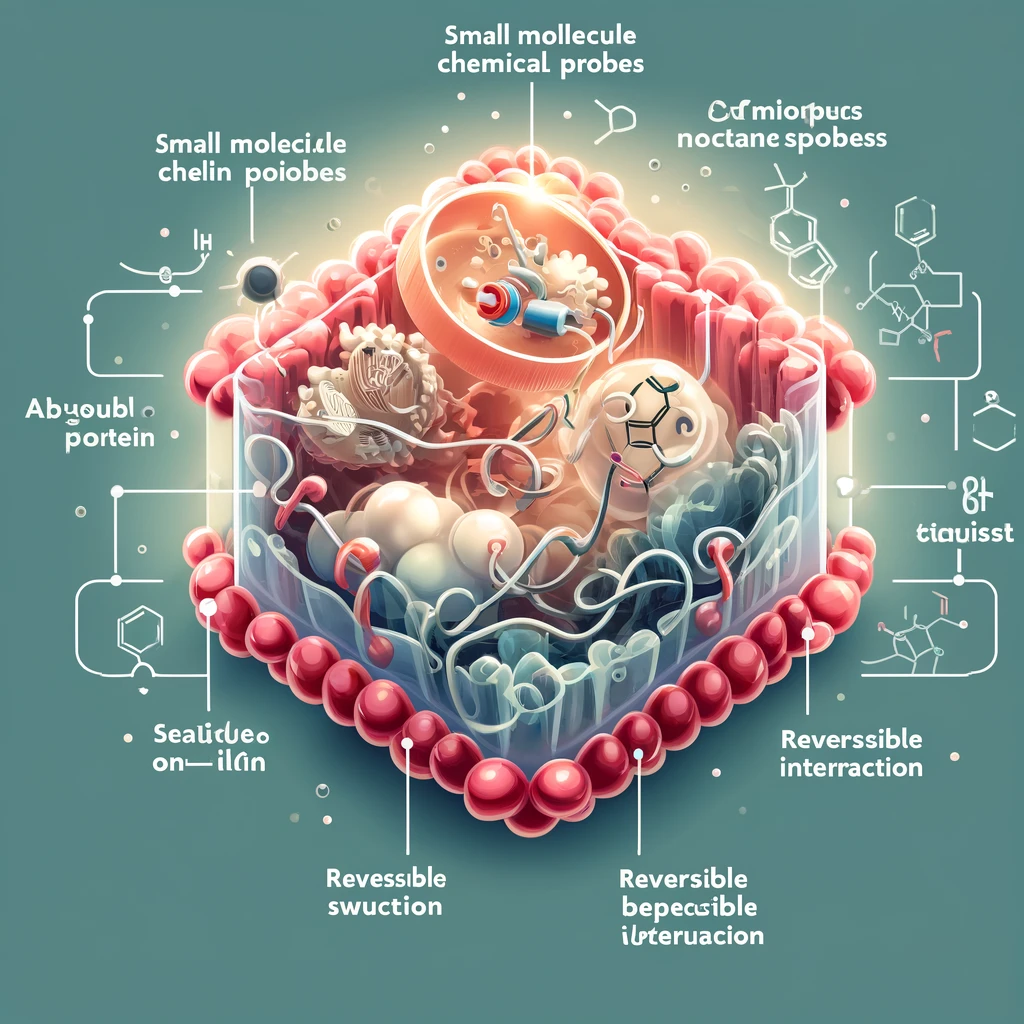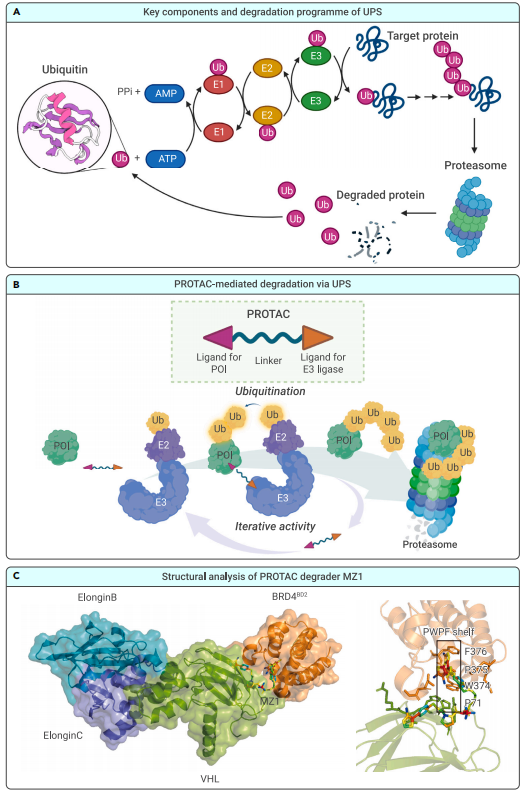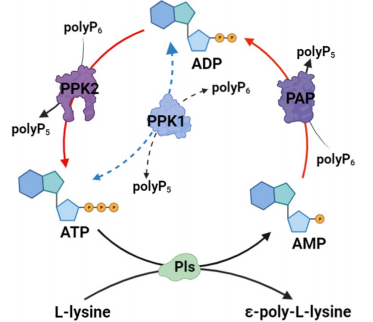Procyanidin C1: The Antioxidant Powerhouse for Longevity, Brain Health & Skincare
Abstract
Procyanidin C1 (PCC1) is a trimeric polyphenol derived from sources like grape seed, cocoa, and apples, now gaining recognition for its broad-spectrum health benefits. This blog explores the compound’s antioxidant, anti-inflammatory, neuroprotective, and senolytic properties, highlighting its role in anti-aging, cardiovascular support, and skincare. From promoting cellular health to showing promise in cancer research and industrial applications, PCC1 is emerging as a powerful plant-based compound with significant therapeutic and commercial potential. Backed by growing scientific evidence, PCC1 is being incorporated into nutraceuticals, functional foods, cosmeceuticals, and green industrial products. This comprehensive guide outlines the science, benefits, applications, and future possibilities of Procyanidin C1, making it an essential addition to the modern wellness conversation.
Introduction: The Power of Procyanidin C1
Imagine a natural compound found in grapes and apples that might not only protect your cells from aging but also support your brain, heart, and skin health. Meet Procyanidin C1 (PCC1) — a lesser-known but powerful polyphenol making waves in the world of nutritional science and longevity research.
Procyanidin C1 is part of the proanthocyanidin family — plant-based antioxidants best known for their presence in grape seed extract, cocoa, and other richly pigmented fruits. While many are familiar with antioxidants like resveratrol or flavonoids like quercetin, PCC1 is quietly emerging as a multi-targeted wellness compound that science is only beginning to appreciate.
Recent studies have linked Procyanidin C1 to a wide range of health-enhancing effects, from fighting inflammation and oxidative stress to promoting cellular health and even extending lifespan in animal models. Researchers are particularly excited about its senolytic activity, which refers to the ability to selectively clear away senescent (or “zombie”) cells — the aged, dysfunctional cells that accumulate as we grow older and contribute to age-related diseases.
This blog explores what Procyanidin C1 is, where it comes from, and why it’s generating buzz in the fields of nutritional science, skincare, anti-aging medicine, and even industrial applications. Whether you’re curious about its role in longevity, looking for natural brain boosters, or just want to optimize your health with nature’s pharmacy, understanding PCC1 could be a game-changer.
What is Procyanidin C1?
Procyanidin C1 (PCC1) is a naturally occurring trimeric flavonoid and a member of the proanthocyanidin family — powerful polyphenols found in many plants. Structurally, PCC1 is composed of three units of epicatechin, a compound known for its antioxidant and anti-inflammatory properties. While you may not have heard of PCC1 specifically, chances are you’ve consumed it if you enjoy foods like grapes, cocoa, apples, cranberries, or red wine.
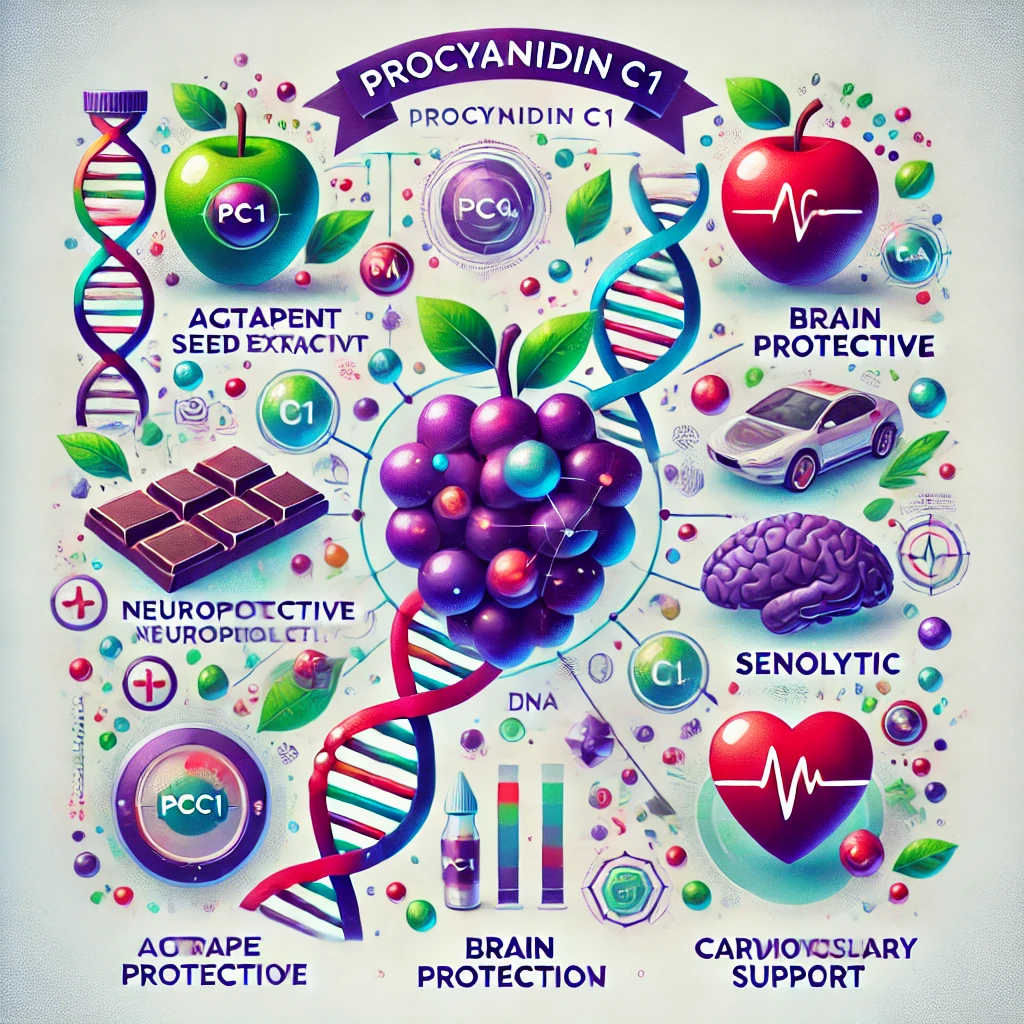
Chemically classified as a B-type proanthocyanidin trimer, Procyanidin C1 is notable for its strong free radical scavenging ability, which supports cellular health and protects tissues from oxidative stress. It’s also referred to by other names in scientific literature such as Cinnamtannin A1, Epicatechin trimer, or simply PCC1.
Unlike more common polyphenols, PCC1 has gained recent attention for its unique biological activities, including senolytic action, neuroprotective potential, and vascular health benefits. It stands out among its procyanidin relatives due to its size (trimer vs. dimers like Procyanidin B2) and its bioactivity in various experimental models.
In nature, Procyanidin C1 is most abundant in grape seed extract, making it a prominent ingredient in supplements and nutraceutical formulations. As consumers look to plant-based compounds for preventive health, PCC1 is carving out a niche for its broad-spectrum therapeutic potential.
Health Benefits of Procyanidin C1
Procyanidin C1 (PCC1) is more than just an antioxidant — it’s a multi-functional plant compound that influences critical biological processes in the body. Backed by recent scientific research, PCC1 offers a wide range of health benefits, making it a promising candidate for dietary supplements, functional foods, and anti-aging therapies.
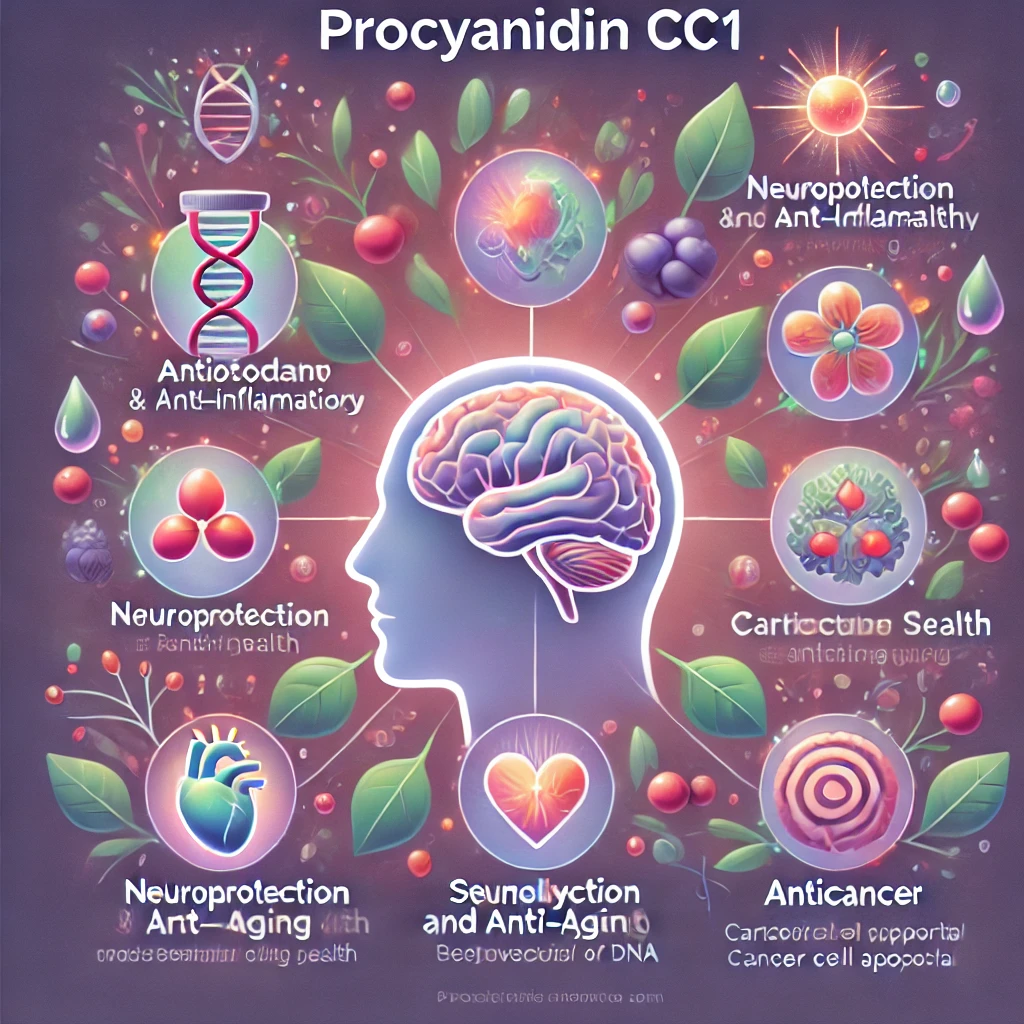
1. Antioxidant and Anti-inflammatory Power
PCC1 is a potent free radical scavenger, helping to neutralize oxidative stress — a key driver of aging and chronic diseases. It also inhibits inflammatory pathways, reducing the production of pro-inflammatory cytokines. This dual action makes it beneficial for managing conditions linked to inflammation and oxidative damage, such as cardiovascular disease, arthritis, and metabolic disorders.
2. Neuroprotection and Brain Health
One of the most exciting areas of research is PCC1’s neuroprotective potential. Studies in Parkinson’s disease models have shown that Procyanidin C1 can protect neuronal cells (e.g., PC12 cells) from oxidative injury. It enhances the activity of enzymes like NQO1, which defend against neuronal damage, suggesting potential as a natural cognitive enhancer and protector against neurodegeneration.
3. Senolytic Activity and Anti-aging Effects
Perhaps the most groundbreaking discovery is PCC1’s senolytic activity — its ability to selectively target and eliminate senescent cells. These “zombie cells” accumulate with age and contribute to tissue dysfunction, inflammation, and chronic illness. In one mouse study, PCC1 not only cleared senescent cells but also extended healthspan and lifespan, putting it in the spotlight of anti-aging research.
4. Cardiovascular Support
Procyanidin C1 promotes vascular relaxation by enhancing nitric oxide (NO) production and stimulating the cGMP pathway — critical mechanisms for maintaining healthy blood vessels and lowering blood pressure. These effects position PCC1 as a natural support for heart health and circulation.
5. Anticancer Potential
In vitro studies reveal that PCC1 can induce apoptosis (programmed cell death) in cancer cells and block their progression through the cell cycle. It activates key proteins like caspase-3, which is essential in driving cancer cells toward death. While more clinical studies are needed, these early findings are promising.
Whether you’re interested in brain health, heart function, or slowing the effects of aging, Procyanidin C1 shows powerful potential across multiple fronts. Up next, we’ll explore how this bioactive compound is being incorporated into skincare and cosmetic products for anti-aging beauty routines.
Procyanidin C1 in Skincare and Cosmetics
The anti-aging market is booming, and Procyanidin C1 (PCC1) is carving out its place in premium skincare formulas. Thanks to its antioxidant-rich profile, PCC1 protects skin cells from UV-induced damage, reduces inflammation, and helps preserve collagen structure — all critical for maintaining a youthful, firm appearance.
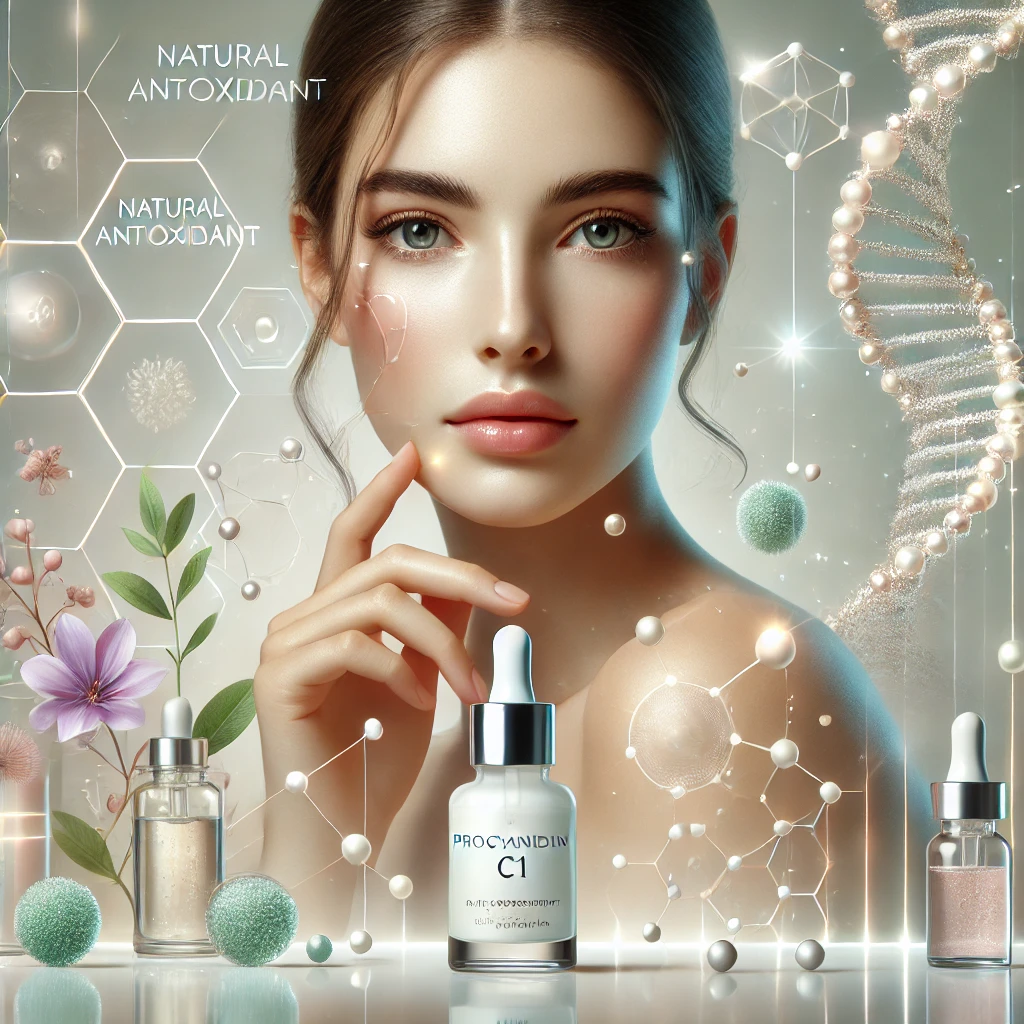
PCC1 also inhibits matrix metalloproteinases (MMPs) — enzymes that degrade collagen and elastin, accelerating the formation of wrinkles and sagging skin. By controlling these enzymes, PCC1 can help maintain skin elasticity and reduce the visible signs of aging.
Another benefit? Its ability to neutralize free radicals, making it an excellent addition to sunscreens, anti-pollution creams, and serums designed to combat environmental stressors. As a result, PCC1 is gaining traction in cosmeceuticals, especially among products labeled as “clean,” “natural,” or “plant-based.”
Industrial and Nutritional Applications of Procyanidin C1
Beyond beauty and wellness, Procyanidin C1 has exciting potential in industrial and dietary fields. In nutrition, it’s commonly extracted from grape seed and included in functional foods, beverages, and dietary supplements. These products aim to enhance immunity, support cardiovascular health, and even improve cognitive function.
One of the biggest challenges with polyphenols like PCC1 is bioavailability — how well the body absorbs and uses them. Modern research has responded by using nanoencapsulation technologies, allowing PCC1 to be embedded into liposomes or nanoemulsions that enhance its delivery and stability in the body.
Even more unexpected is PCC1’s role in green industrial applications. For instance, it’s been explored as a corrosion inhibitor in industrial settings due to its ability to form protective films on metal surfaces. This opens doors to eco-friendly alternatives to toxic synthetic chemicals used in pipelines, marine structures, and machinery.
Whether as a nutritional supplement, a skin-rejuvenating compound, or a green chemistry agent, Procyanidin C1 proves to be a highly adaptable bioactive with benefits across multiple industries.
Conclusion: Why Procyanidin C1 Deserves Your Attention
Procyanidin C1 (PCC1) is more than just a plant compound — it’s a science-backed, multifunctional powerhouse with the potential to transform how we think about aging, disease prevention, and wellness. From fighting oxidative stress and reducing inflammation to supporting brain, heart, and skin health, PCC1 offers a broad spectrum of benefits that modern science is only beginning to tap into.
Its unique senolytic activity — the ability to target and remove aging cells — puts it at the forefront of anti-aging research, while its neuroprotective and cardiovascular effects make it a promising addition to any holistic health regimen. Whether you’re looking to optimize your health naturally or stay ahead of the curve in wellness and skincare trends, PCC1 is a name to remember.
As more studies emerge and supplement technologies improve, Procyanidin C1 is poised to become a key player in nutrition, skincare, and even sustainable industry. It’s a perfect example of how nature holds solutions to some of our most pressing health challenges.
References
Liu Y, Liu X, Chen X, Yang Z, Chen J, Zhu W, Li Y, Wen Y, Deng C, Gu C, Lv J, Ju R, Zhuo Y, Su W. Senolytic and senomorphic agent procyanidin C1 alleviates structural and functional decline in the aged retina. Proc Natl Acad Sci U S A. 2024 Apr 30;121(18):e2311028121. doi: 10.1073/pnas.2311028121. Epub 2024 Apr 24. PMID: 38657052; PMCID: PMC11067450.
https://www.pnas.org/doi/abs/10.1073/pnas.2311028121
Mbara KC, Devnarain N, Owira PMO. Potential Role of Polyphenolic Flavonoids as Senotherapeutic Agents in Degenerative Diseases and Geroprotection. Pharmaceut Med. 2022 Dec;36(6):331-352. doi: 10.1007/s40290-022-00444-w. Epub 2022 Sep 13. PMID: 36100824; PMCID: PMC9470070.

